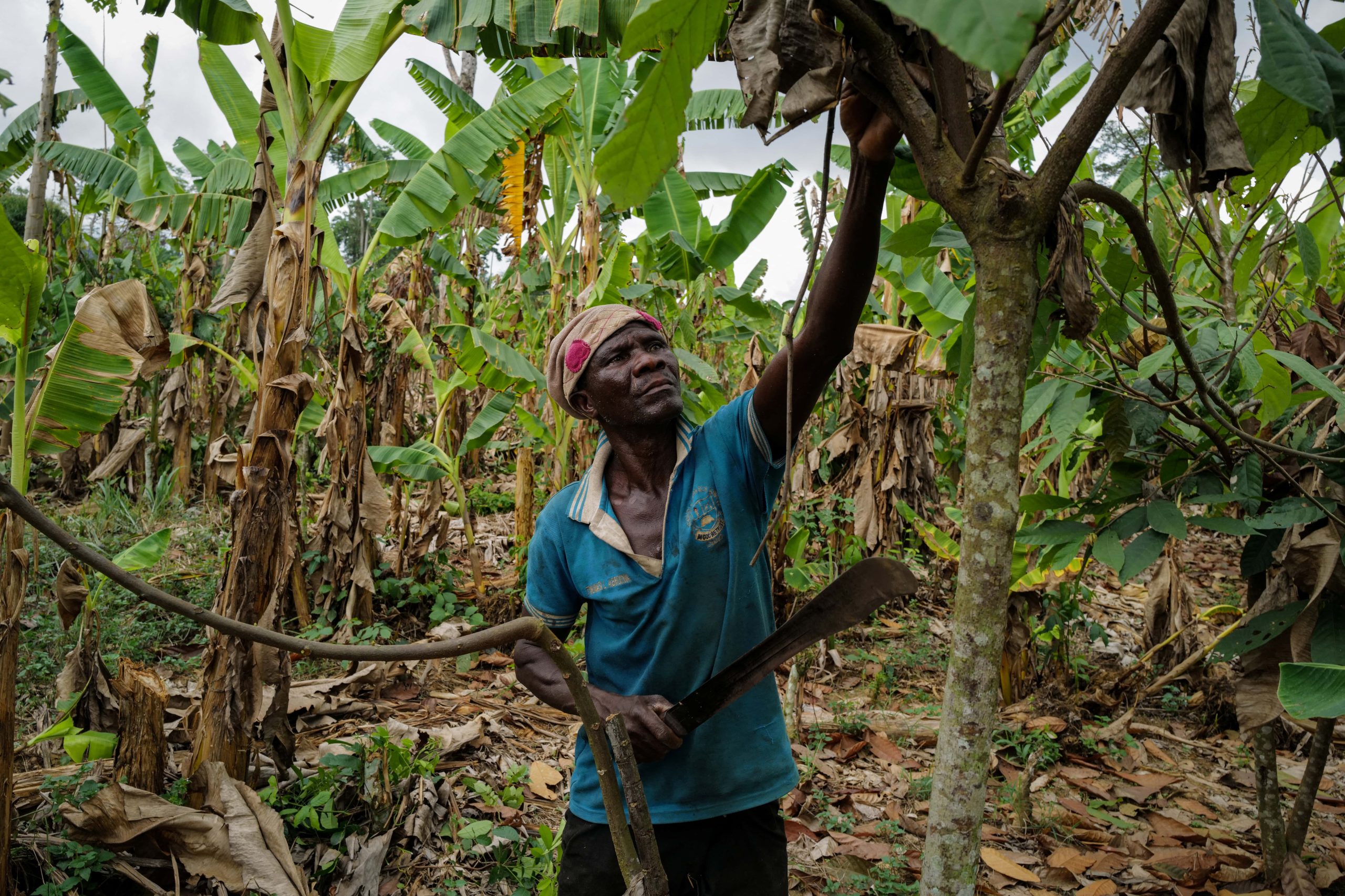New research shows that hotter temperatures and erratic rainfall are pressuring cocoa production in West African countries that supply around 70% of the main ingredient for chocolate, quadrupling the price of cocoa over the past two years and making Valentine’s Day a costlier enterprise worldwide.
Studies released this week by charity Christian Aid and nonprofit news organisation Climate Central found that extreme temperatures have become more frequent in the region, affecting cacao trees which do not thrive well in temperatures above an optimal range of 18–32 degrees Celsius.
Kristina Dahl, vice president for science at Climate Central, urged sweethearts swapping chocolate on Valentine’s Day to consider the broader impact of climate change. “These heat extremes, driven by burning fossil fuels, are not just affecting the environment – they’re directly impacting the farmers and communities who rely on cacao production for their livelihoods,” she said.
High heat drives record prices
An analysis of daily maximum temperatures over the past decade revealed that climate change added on average at least three weeks above 32C each year, adding six extra weeks of high temperatures in 2024 alone, according to Climate Central. This occurred during the main cacao crop season from October to March in the West African cocoa-producing nations of Côte d’Ivoire, Ghana, Cameroon and Nigeria.
In late December 2024, a new record for cocoa prices was set at $12,605 per tonne and they have remained stubbornly high since, Christian Aid said.
DRC’s huge Green Corridor project lacks buy-in from forest communities
Excessive heat significantly hinders photosynthesis and increases water stress, the Climate Central report emphasised, resulting in shrivelled flowers and smaller, rotted cacao pods, further reducing the quality and quantity of the harvest.
While high heat is not conducive for cacao cultivation, more erratic and heavier rainfall also degrades growing conditions, encouraging the spread of disease and reducing trees’ pod production, Christian Aid said in a separate report.
A strong carbon tax on shipping can give hope to climate-vulnerable communities
Consistent warm and humid conditions are ideal for the crop’s growth, requiring annual rainfall of between 1,500 and 2,000 mm, with a dry spell lasting no longer than three months.
Changing weather patterns have tightened global cocoa supplies and fuelled rising prices for chocolate – a by-product of cocoa – yet that has not put off sweet-toothed consumers. The chocolate market grew by 3.8% between 2018 and 2023, the researchers found. Last year, it was worth $109 billion – and it is estimated to grow to $145 billion by the end of this decade.
Adaption limits
Farmers in West Africa are finding it hard to adapt to the shifting climate – and through their associations, have called for direct access to more financial support. Only 0.3% of climate finance was targeted at family farmers globally in 2021, according to the group Family Farmers for Climate Action.

Industry officials have also called for farmers to be paid a fair price for their cocoa as they rarely benefit from commodity price increases, receiving just 6% of the price paid for a chocolate bar on average.
Ibrahima Coulibaly, president of ROPPA, a West African family farmers’ organisation, said decades of under-investment and unfair trade mean cocoa farmers are highly vulnerable to climate impacts. To safeguard chocolate supplies, “governments need to work with – and invest in – farmers and their organisations” and ensure “farmers are paid a fair price for their cocoa”, he added.
For example, they could use the extra money to scale up nature-friendly practices – such as planting shade trees to protect cocoa pods from heat and sunlight – which are key to adaptation, Coulibaly noted.
Changing incentives
Sustainable agriculture is essential to addressing climate impacts on cocoa production in the West Africa region, Climate Home reported last year. Current incentives, such as subsidies for fossil-fuel based fertilisers and tax breaks, have enabled deforestation and water depletion as farmers cleared more land to grow trees, as well as boosting planet-heating emissions.
To shift the cocoa industry in a greener direction, the Rainforest Alliance recommends taxing chemical fertilisers and pesticides, and ending mono-cropping practices which can harm soil health and biodiversity.
After US cuts cash, Green Climate Fund head urges others to step up
It says subsidies should instead be provided for practices that improve soil conditions and local ecosystems, including growing cover crops that maintain soil nutrition over the winter months, and shade trees to protect seedlings from harsh weather.
In the longer term, the main way to protect cocoa production – “a vital livelihood for many of the poorest people around the world” – and keep chocolate affordable is for countries to curb rising global emissions of the greenhouse gases heating up the planet, said Osai Ojigho, director of policy and public campaigns at Christian Aid.

